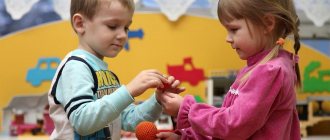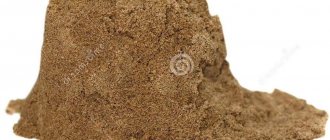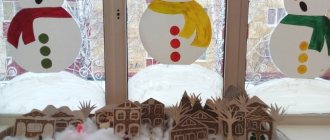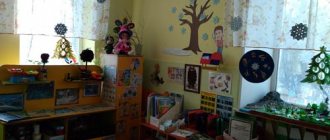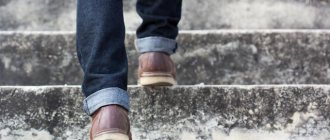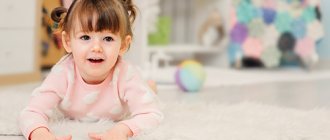Profile
The center of water and sand is a table with two containers mounted on the tabletop. They are designed for conducting all kinds of experiments with sand and water, washing, washing household items and other activities that require liquid. The product is made of laminated chipboards, which are protected with a special coating that is resistant to the destructive effects of moisture and aggressive detergents. They are practical and durable. Choosing them for installation in a kindergarten is the right decision.
Types of centers on the site
If you do not take into account product configurations, their color and shape, all centers in the company’s catalog can be divided into two types:
- Simple. Only two containers are built into the countertop. Practical and inexpensive products that are ideal for preschool.
Multifunctional. These are real research centers, the options for which there are many more applications than for simple types. They are significantly larger and can accommodate several containers of different shapes and sizes. Can be connected to water supply and sewerage.
Games at the Sand-Water Center
15.Waterfall
For this game, you will need any toys that can be used to pour water: a watering can, a small bowl, a small jug or a simple plastic glass. The baby draws water into a container and, pouring it out, creates a noisy waterfall with splashes. Please pay attention to the crumbs that the higher the waterfall, the louder it “makes noise”.
16.Water coloring
Tint the water with watercolors. It's better to start with one color. Make a concentrated solution in one bottle (plastic, transparent), and then pour this solution in different quantities into other bottles. After pouring the concentrated solution into containers, add water and see with your child where the water is darker and where it is lighter.
17. Drowning - not drowning
Take objects from different materials: metal, wood, plastic, rubber, fabric, paper, washcloth. Lowering various objects in turn, the child observes whether they are immersed in the water and what happens to them.
18. Little fisherman
Small objects are thrown into a pool or basin. These will be fish. The child is given a “fishing rod” - a ladle with a long handle, with which he will catch fish. You can also catch fish with a net - a colander or sieve is suitable for this.
19. Dissolves or does not dissolve
What else can dissolve in water besides paints? Let your baby pour different liquids into the water (warm or cold) with a spoon. Juice, milk, kefir, syrup, honey, jam or even a few drops of sunflower oil. What if you pour different powders into water? Sugar, salt, flour, starch, instant or insoluble coffee. What if you throw solid objects into the water? A piece of soap or sugar or something else. What happens to the water? Does its color change? Transparency? Does what we throw into water dissolve immediately after stirring or after some time?
20.From place to place
Place small plastic balls in water. The baby’s task is to catch all the balls with a long-handled strainer and put them into an empty plastic bowl that floats nearby.
21. Bubbles
You should teach your baby to blow bubbles in water. An adult must first show the child how to do this, so that he tries to do the same, and then watches the bubbles. This can become an element of teaching a child to dive and swim if parents do not have the opportunity to conduct classes with their child in the pool. At first, you can simply blow air through your mouth, lowering your head into the water, then try doing this through a straw or hose. Such games give the child incomparable pleasure.
22. Leisya, Leisya
For this fun you need a funnel, a plastic glass and various plastic containers with a narrow neck. Using a glass, the baby pours water into bottles through a funnel. You can simply pour water through the funnel, raising it high.
Updating the developmental subject-spatial environment of the second junior group of kindergarten.
Tatyana Mukhina
Updating the developmental subject-spatial environment of the second junior group of kindergarten.
Everyone knows that, in accordance with the Federal State Educational Standard for Preschool Education, a developing subject-spatial environment is part of the educational environment , represented by specially organized space, materials, equipment and inventory for the development of preschool children in accordance with the characteristics of each age stage, protecting and strengthening them health, taking into account the characteristics and correction of deficiencies in their development . The organization of a developing subject-spatial environment is especially relevant , since it makes it possible to develop the individuality of each child, taking into account his inclinations, interests, and level of activity.
A developing subject-spatial environment must be content-rich, transformable, multifunctional, accessible, variable and safe. We all know that children’s activity centers should be created groups . Today I want to bring to your attention one of the centers -
.
Watching the activities of the children on a walk, I noticed that playing with sand was monotonous, so the idea came to update it
in
the group .
Dear teachers! I invite you to our “ Sand Courtyard ”
There is a shelf nearby, and it tells the children that everyone needs instruments to play properly.
Various toys, Sponges and shells, Pebbles, funnels, Jars and nets, Tubes and sprinklers, Everything you need to play.
You can use objects , pour, dig, pour, and, of course, be sure to follow the Rules for everyone, in our sandy , only play in pairs.
Article “Features of organizing educational games with sand and water with young children”
"I bake, bake, bake"
The child “bakes” various products from sand (buns, pies, cakes). To do this, the baby can use a variety of molds, pouring sand into them, compacting them with his hand or a scoop. You can also “bake” pies with your hands, transferring wet sand from one palm to another. Then the child “treats” mom, dad, and dolls with pies.
"Fences"
The kid makes little fences in a circle with his hands. Behind such a fence you can hide a bunny from the evil gray wolf.
"Magic fingerprints in the sand"
The teacher and the child leave fingerprints on the wet sand of their hands and then complete them or add pebbles to create funny faces, fish, octopuses, birds, etc.
Games for children from 3 years old
"Warm" or "Cold"
Purpose: to consolidate the concept of “warm” or “cold”.
Content.
Two types of toys are needed, two to three of each, preferably rubber or plastic (for example: ducklings, fish, boats, dolphins and small balls - red, blue, yellow, white).
The teacher fills one container with warm water and the other with cold water. He tells the children: “Ducklings like to swim in cold water, and fish in warm water. Let's bathe them." The kid puts the ducklings in a container with cold water, and the fish in warm water. Thus, we teach the child not only the properties of objects, but also teach him to determine the difference between cold and warm.
“How does it float?”
Purpose: Introducing children to the properties of the material
Content.
To play and experiment, you need a set of objects made from different materials. A plastic boat, a rubber duck, a metal spoon, a pebble, a paper boat, a nut shell, a piece of fabric, a foam figurine, a wooden stick, etc.
The teacher invites the child to gradually lower all the objects into the water: “What a beautiful boat!” He is ready to go on a journey, to sail. Let him go into the water and let him swim. We have so many items, let’s let them go too, they want to swim.” During the game, the teacher asks the child to name the objects that are lowered into the water. Comment on the actions of objects (sinking, floating, getting wet).
"Captains"
Goal: activation of the lip muscles, development of the ability to alternate long, smooth, strong exhalations.
Content.
The teacher fills a container with water and launches a paper boat into it. The child sits on a chair nearby. An adult invites the child to take a boat ride from one shore to the other. Shows that the banks are marked with stripes of different colors. He explains that in order for the boat to move, you need to blow on it. You can simply blow by stretching your lips with a tube without puffing out your cheeks. Shows how to do it. Draws the child’s attention to the sound that is produced: “F.” The kid repeats. “But then the wind came, it was not blowing smoothly. That’s it!” - the adult blows on the boat abruptly, not evenly: “P-P-P.” Draws the baby's attention to what sound is heard now - “P.” He suggests trying to blow and drive the boat to the other shore. The game is repeated several times. The teacher makes sure that the child does not puff out his cheeks or blow too hard. During games, the teacher must praise the child for correctly completing the task, support and help, and in no case reproach the child for spilling water, scattering sand, or getting his clothes wet. Playing with sand and water should bring joy to children.
